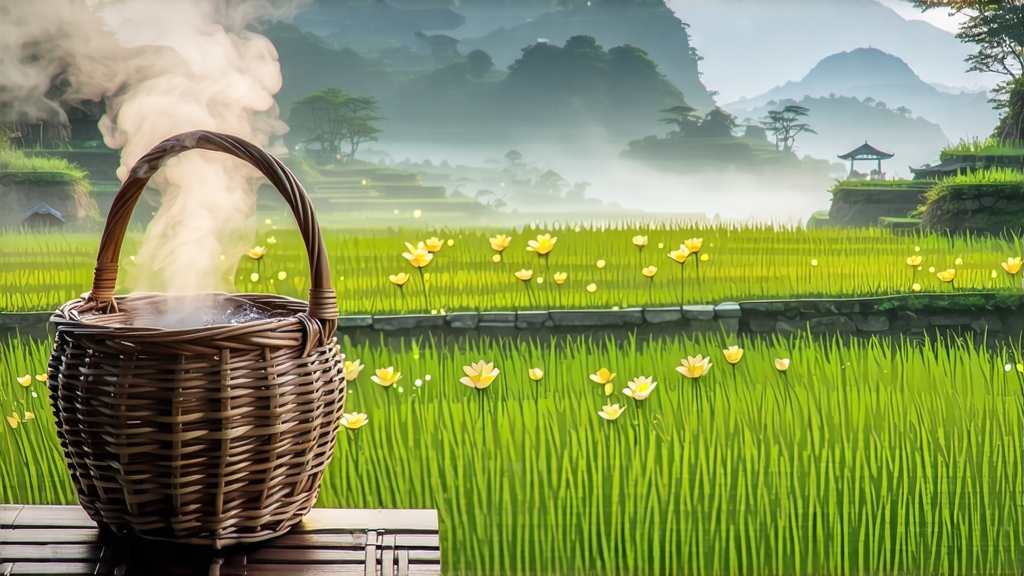
If green tea is the fresh-faced scholar of Chinese leaf lore and pu-erh the bearded sage, then yellow tea is the quiet aristocrat who arrives without retinue yet commands every gaze. Among the handful of authentic yellow teas still crafted in China, none carries more courtly pedigree than Meng Ding Huang Ya, the “Yellow Bud from the Summit of Meng.” Grown on the mist-locked ridges of Mt. Meng in Ya’an, Sichuan, this tea was already a tribute item in the Tang dynasty (618-907 CE) when caravans of compressed leaf left the same prefecture for Tibet, swapping tea for war-horses. By the Song era its pickings were measured in “buds per phoenix,” imperial inspectors counting delicate tips to ensure only the most uniform shoots were packed in silk and sent along the cliff-hanging roads to Chang’an. After a 300-year eclipse during the Ming and early Qing, when loose-leaf fashion turned to green and oolong, Meng Ding Huang Ya re-emerged in 1959 when state tasters, combing archives for “lost tribute teas,” convinced local masters to resurrect the painstaking yellowing process. Today fewer than 3,000 kg of authentic summit-grade reach the market each spring, making it rarer per ounce than silver.
The microclimate is the first secret. Mt. Meng thrusts skyward just where the Sichuan basin collides with the Tibetan plateau. Night clouds roll up the ravines like slow tides, blanketing tea gardens at 1,000–1,400 m while the morning sun burns through by ten o’clock. This diurnal yo-yo stalls photosynthesis, packing amino acids—especially L-theanine—into every nascent bud. The bushes themselves are seed-propagated descendants of Tang-era “Meng Ding Qun Ti Zhong,” a mixed population never clonally grafted, so each shrub expresses subtle genetic drift: some leaves tilt ivory, others jade, a living mosaic that complicates plucking but layers cup fragrance.
Harvest obeys a lunar, not solar, calendar. Work begins on the first day after Qing Ming when the morning dew weighs exactly “three grains,” an old measure tested by tossing a bud onto a bronze mirror: if it skids, the surface is too wet; if it sticks, the water content is right. Pickers—usually Tujia women who have climbed these terraces since girlhood—snap only the “spear and flag,” the unopened bud plus the first leaf still half-folded like a pennant. A full kilo of finished tea demands 42,000 such spears, all plucked before noon so that mountain chill keeps the cells taut.
Withering happens not on bamboo trays but on thin linen stretched over chestnut frames set inside dark pine cabins. The leaf loses 15 % moisture in ninety minutes, yet the linen wicks surface water without bruising the cuticle. What follows is the hallmark of yellow tea: sealed yellowing, men huang in Mandarin. The warm piles are wrapped in triple layers—first steamed cotton, then waxed paper, finally a hemp cloth—creating an oxygen-starved chamber where temperature hovers at 32 °C for four to six hours. In this edible darkness chlorophyll quietly unzips its magnesium ion, releasing grassy pyrazines and coaxing a straw-gold hue. Meanwhile polyphenol oxidase, denied full air, performs a partial dance usually reserved for black tea, polymerizing catechins into theaflavins that lend a silky, nut-sweet note often mistaken for age.
Kill-green is gentle. Makers use a shallow, duck-egg-green wok heated to just 140 °C, tossing 250 g at a time in arcs that resemble calligraphic “flying white” strokes. Six minutes of wrist-driven flip-and-press arrests enzymatic activity yet leaves 35 % residual moisture, the leaf still leathery. A second, shorter men huang follows—two hours in linen—before the tea is hand-rolled into sparrow-tongue shapes along five-bamboo slats. Final drying is done over a bamboo-tube charcoal brazier whose heat is moderated by a slab of Ya’an slate; the slate’s mineral content is said to donate a faint flint accent that echoes the region’s famous rain-soaked stones.
The result is a leaf the colour of antique parchment, flecked with microscopic hairs that catch light like barley silk. Dry aroma is understated: warm wheat,